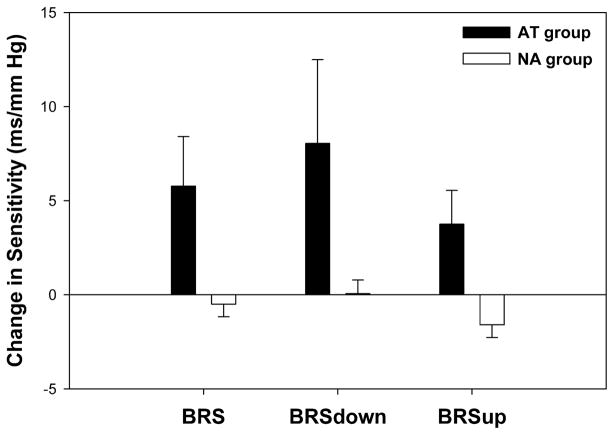FIGURE 1.
Training-induced changes in baroreflex sensitivity. The aerobically trained (AT) group demonstrated an increase in baroreflex sensitivity (BRS) that was not demonstrated in the nonaerobic (NA) group (+60.9% ± 23.5% vs +2.2% ± 7.9%; P = 0.010). The increase in BRS observed with training in the AT group was primarily due to an increase in the sensitivity of upward sequences (BRSup, +50.1% ± 20.8% vs −10.1% ± 6.9%; P = 0.004). There was also a trend toward a training-induced increase in downward sequences (BRSdown, +67.0% ± 25.5% vs +7.6% ± 8.7%; P = 0.019) in the AT group that did not reach statistical significance. A value of P < 0.0125 was considered significant, due to a Bonferroni correction for multiple comparisons.

